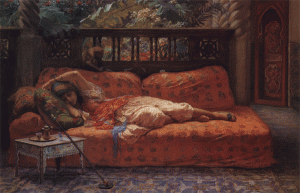 A post earlier this week contained a startling public health nugget: most Baby Boomers—52 percent—report zero physical activity. No jogging, no biking, no backpacking. No walking the dog. No wading in shallow water. No golf with a cart.
A post earlier this week contained a startling public health nugget: most Baby Boomers—52 percent—report zero physical activity. No jogging, no biking, no backpacking. No walking the dog. No wading in shallow water. No golf with a cart.
This is head-swiveling because (one) it’s an intellectual challenge to conceive of zero physical activity and (two) some of us have nurtured an image of ourselves as mold-breakers on aging.
In our small way, we at Recreati have helped spread the idea. And there is some truth—at least some anecdotal truth—in it. Centenarian marathoners, ancient cyclists, post-60 Iron Men and Women. But it’s beginning to look like this might be another example of the extreme stratification of society: you have the people with the genes and luck and money to maintain an active life into the 70s and 80s. And you have the other, most likely prone, 52 percent.
A note on sources: the 52 percent statistic comes from a study that was reported in February as a research letter in JAMA Internal Medicine. (Summaries here, here and elsewhere.) In brief: researchers compared data on older people (46-64) from 1988 to 1994 to data on Baby Boomers from 2007 to 2010.
And wow. Baby Boomers were more obese, had a higher rate of diabetes, and were more likely to have hypertension and high cholesterol. They were more than twice as likely to walk with a cane or walker. Oddly, they are in worse shape even though they are less likely to smoke and more likely to live longer in their diminished condition.
And Boomers know it. Only 13 percent said they were in excellent health in middle age; a generation earlier, 39 percent said their health was excellent.
By the way, only 17 percent of the early generation said they got no physical activity. Which means that in just a couple of decades, the percentage of older people who don’t get off the couch has more than tripled.
To recap: more people, living more years, with less quality of life. As one of the researchers behind the study said, “That’s not a good public health outcome.”
Photo: The Siesta (Afternoon in Dreams), by Frederick Arthur Bridgman (1847-1928) via Wikimedia Commons.









